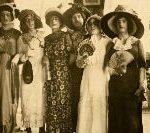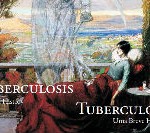While mosquitoes are most often thought of as a nuisance, they are actually among the world’s deadliest creatures as they carry and transmit a variety of pathogens causing diseases including malaria, dengue, yellow fever and Zika.
Over the years HCS-Manguinhos has published numerous articles in which the mosquito as a transmitter of diseases is the protagonist. We have prepared a selection of these articles.
The article The Antonio Gonçalves Peryassú mosquito collection at the Museu Nacional, in Rio de Janeiro: retrieving the memory of lost heritage shows how collections in the early decades of the twentieth century were crucial for the study of the systematization and natural history of mosquitoes in Brazil. One key figure in this context was Antonio Gonçalves Peryassú. This work analyses the history of a collection he organized at Museu Nacional [National Museum] in Rio de Janeiro between 1918 and 1922.

Group of test tubes from the Peryassú Collection at Museu Nacional in Rio de Janeiro. In Lourenço-de-Oliveira R, Lourenço F dos S. The Antonio Gonçalves Peryassú mosquito collection at the Museu Nacional, in Rio de Janeiro: retrieving the memory of lost heritage. Hist cienc saude-Manguinhos [Internet]. 2023;30:e2023018. Available from: https://doi.org/10.1590/S0104-59702023000100018
The article Anopheles gambiae in Brazil: the background to a “silent spread,” 1930-1932, by Gabriel Lopes Post-doctoral research intern at PPGHCS, Casa de Oswaldo Cruz, Fiocruz analyzes the arrival and identification of this African mosquito and the initial reactions of scientists and public health authorities against the epidemics of malaria caused by this species.
 According to the article, the mosquito was found by Rockefeller Foundation entomologist Raymond C. Shannon, who worked for the Cooperative Yellow Fever Service (SCFA) in Natal, capital of the state of Rio Grande do Norte.
According to the article, the mosquito was found by Rockefeller Foundation entomologist Raymond C. Shannon, who worked for the Cooperative Yellow Fever Service (SCFA) in Natal, capital of the state of Rio Grande do Norte.
Lopes argues that the mosquito’s presence was neglected after some initial emergency actions, resulting in a major malaria epidemic in 1938.
In the article From miasmas to mosquitoes: medical thought on yellow fever in Yucatan, 1890-1920
Carlos Alcalá Ferráez, shows how the medical thinking was directed towards the extermination of the mosquito that transmits this disease. The article goes on to analyze the co-existence of miasmatic and bacterial ideas and to show how medical initiatives began focusing on eradication of the mosquito transmitter once Finlay’s postulates had been demonstrated.
Read more about mosquitoes in HCS-Manguinhos:
El pensamiento médico sobre la fiebre amarilla, Yucatán 1890-1920 El trabajo muestra cómo la mirada médica se dirigió al exterminio del mosquito transmisor de este padecimiento.
emergence of dengue as a virological challenge Although outbreaks were reported throughout the twentieth century, dengue was barely known in the Americas until the epidemic of dengue fever in Cuba in 1981.
Zika and Aedes aegypti: new and old challenges The current issue of HCSM (vol.24 no.4 Oct./Dec. 2017) features a debate about the zika epidemic, which came to the fore when the disease raised a series of concerns related to birth defects.








